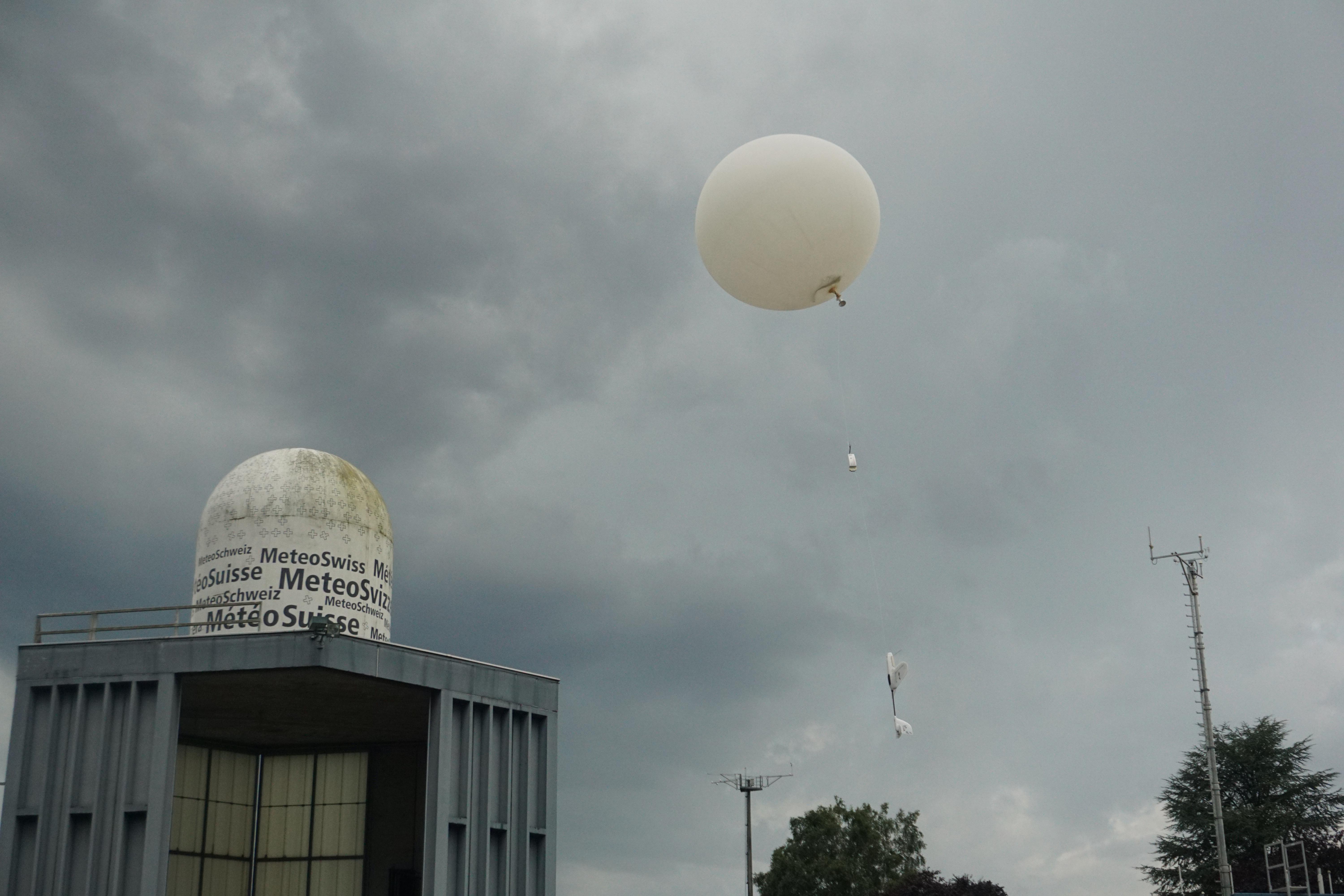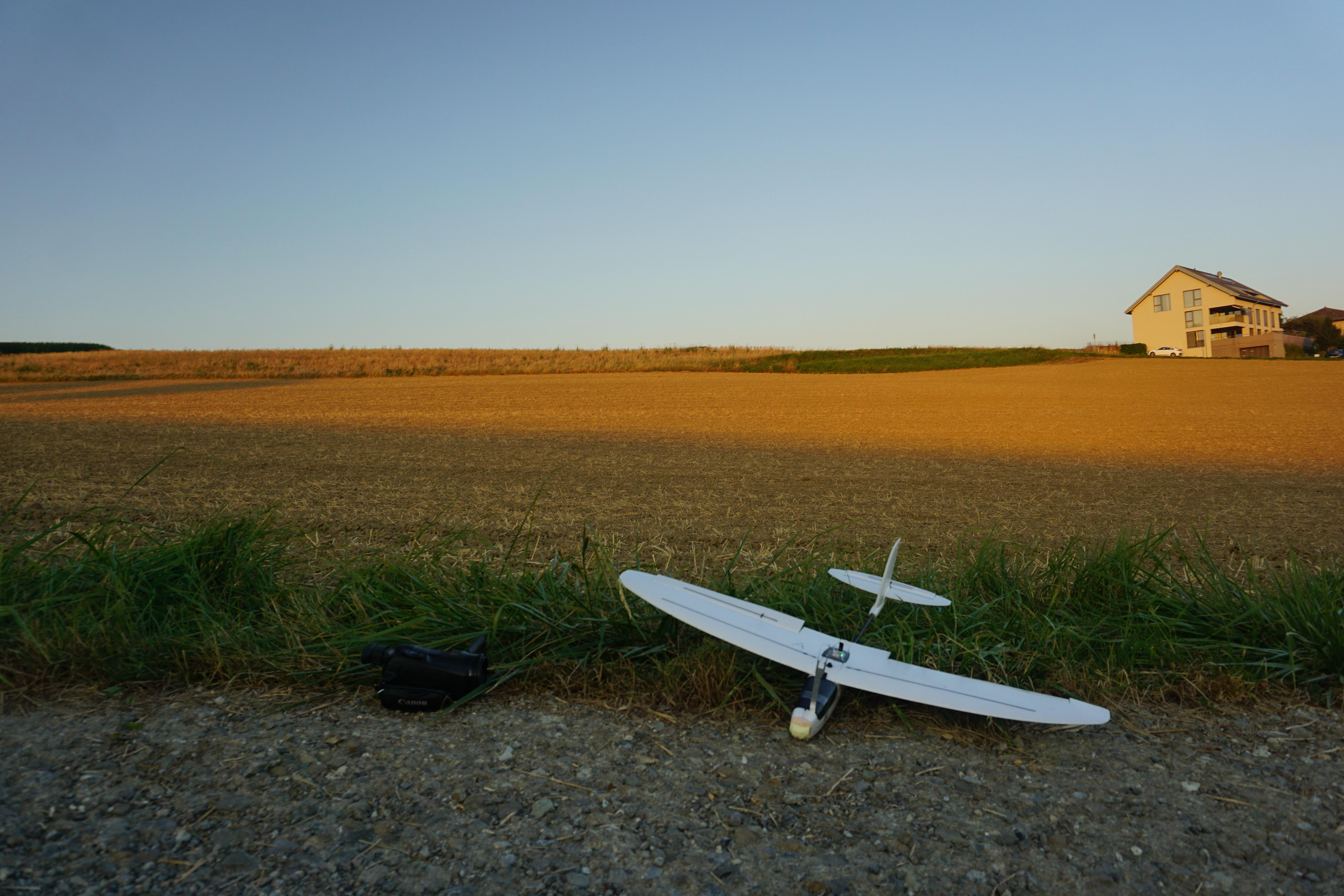
Yohan Hadji with the probe before launch at MeteoSwiss © 2024 Yohan Hadji
Some 80% of weather radiosondes - remote measurement instruments containing plastic, batteries and electronic parts - end up lost in nature after one flight. But a startup created by an EPFL master's student is set to change that with a new, ultra-lightweight "glidersonde" that can automatically return to where it was launched.
It's standard practice in many countries to launch radiosondes carried by weather balloons twice a day. These instruments climb for two hours towards the stratosphere, collecting data on wind speed and direction, temperature, pressure and humidity at various altitudes - critical information for generating weather forecasts and improving climate models. The weather balloons are typically inflated with hydrogen, and when they reach an altitude of around 35,000 meters, the low atmospheric pressure causes them to burst and drop the radiosondes. As they fall to the ground, the instruments are pushed by wind currents and sometimes land in water or very remote areas. Of the approximately 600,000 radiosondes launched around the world each year, some 80% are never found. Yohan Hadji, an EPFL master's student, has developed a solution to this problem - a new type of radiosonde that can automatically fly back to a predetermined spot. His device was tested by the Swiss Federal Office of Meteorology and Climatology (MeteoSwiss) this summer, and weather offices in other countries are taking an interest, too. "France, the UK, Germany, Croatia and Canada also want to try it out," says Hadji, who just created a startup called R2Home.
Algorithms adjust for wind measurements taken during the ascent
Hadji's radiosondes are attached to small foam gliders equipped with a guidance system. The entire unit weighs a mere 250 grams and is lifted into the air by a weather ballon. "My device consists of a standard radiosonde inside a wing-shaped box," he says. "It's small and light enough to classify as a conventional radiosonde under the FOCA [Swiss Federal Office of Civil Aviation] classification." The guidance system uses an algorithm to calculate the optimal trajectory for returning to the point where the radiosonde was launched or to another site programmed into its GPS. Developing it was a real technical challenge given the glider's ultra-lightweight material. "I had to create an algorithm that could factor in wind measurements taken during the ascent," says Hadji. "At some altitudes, the wind can reach speeds of over 200 km/h!"
Hadji presented his invention to meteorologists and to experts at the FOCA, who were interested in its feasibility and reliability. The FOCA gave him an opportunity to run his first test flights under real-world conditions. In all, Hadji's glidersondes have been tested approximately 60 times in Switzerland, including around a dozen times at the MeteoSwiss weather station in Payerne this summer. During each test flight, the glider successfully returned to within a 15-meter radius of the desired location. "The initial results are very promising," says Yves-Alain Roulet, head of the Measurement Technology Division at MeteoSwiss. "Now we need to test the system's performance under more complicated weather conditions."
Switzerland leads the pack when it comes to recovering lost radiosondes: approximately 75% of them are found, compared with a global average of 20%. "That's because we have a highly active community of radiosonde chasers," says Hadji. Yet less than 1% of the recovered radiosondes are actually used again, since the temperature and humidity sensors tend to get damaged after spending so much time exposed to the elements. "My device can help make sure that doesn't happen, so that the radiosondes can be used for numerous flights," says Hadji.

Hadji's radiosonde may be able to return to where it was launched, but is it effective at its primary function - taking accurate measurements? MeteoSwiss ran comparative tests to find out. "Our initial tests found no significant difference between the radiosonde embedded in the R2Home glider and a standard radiosonde," says Roulet. "But further testing is needed here too, including in weather conditions representative of all four seasons." These encouraging results paved the way for Hadji to attend the World Meteorological Organization's Technical Conference on Meteorological and Environmental Instruments and Methods of Observation (TECO) this year, held in Vienna, Austria, in late September.
Hadji, now 20, began working on his invention in 2019 while a high-school student in Grenoble. Since then he's been advancing through the various stages of product development at a rapid pace - despite encountering some headwinds along the way. "For instance, until 2023 my idea was to attach the radiosonde to a parachute rather than a foam glider," he says. "But that design would have been problematic at very high altitudes." He may further develop that approach sometime in the future too, because he believes "it could be an attractive option for heavier and more expensive payloads."

Running tests with foreign weather offices
Since 2022, Hadji has benefited from a number of local support programs for entrepreneurs: EPFL's Blaze program, the Foundation for Innovation and Technology, the Sylvie Rusconi Foundation and, more recently, Venture Kick. His startup was recently acquired by Meteomatics, a Swiss company that's the world's leading supplier of weather information. For now, Hadji is focused on preparing for the tests with foreign weather offices. The many radiosonde chasers around the world could soon find themselves coming home empty-handed.






